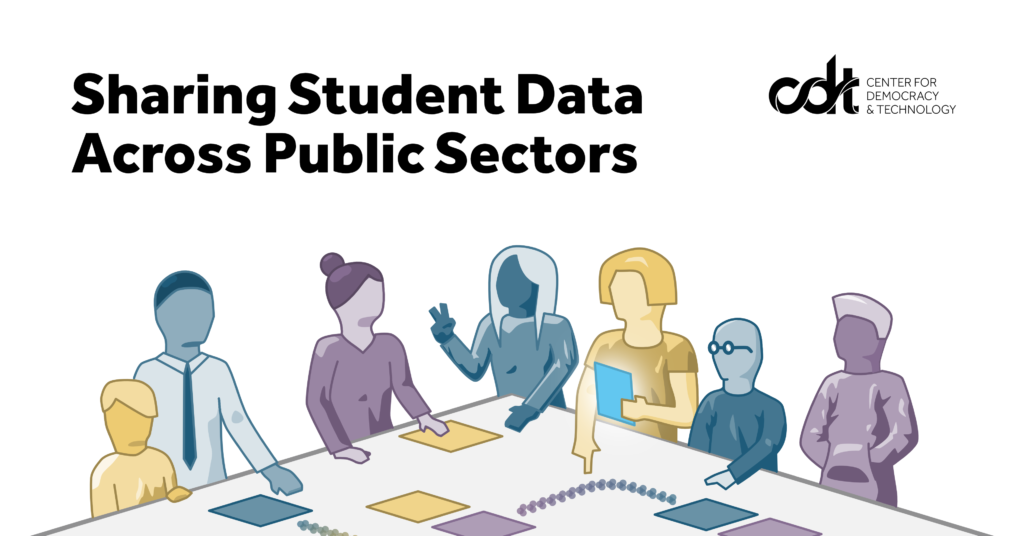Equity in Civic Technology, Privacy & Data
Report – Sharing Student Data Across Public Sectors: Importance of Community Engagement to Support Responsible and Equitable Use

This report was created with consulting support from Maya Lagana, Independent Consultant.
Data and technology play a critical role in today’s education institutions, with 85 percent of K-12 teachers anticipating that online learning and use of education technology at their school will play a larger role in the future than it did before the pandemic. The growth in data-driven decision-making has helped fuel the increasing prevalence of data sharing practices between K-12 education agencies and adjacent public sectors like social services. Yet the sharing of personal data can pose risks as well as benefits, and many communities have historically experienced harm as a result of irresponsible data sharing practices. For example, if the underlying data itself is biased, sharing that information exacerbates those inequities and increases the likelihood that potential harms fall disproportionately on certain communities. As a result, it is critical that agencies participating in data sharing initiatives take steps to ensure the benefits are available to all and no groups of students experience disproportionate harm.
A core component of sharing data responsibly is proactive, robust community engagement with the group of people whose data is being shared, as well as their surrounding community. This population has the greatest stake in the success or failure of a given data sharing initiative; as such, public agencies have a practical incentive, and a moral obligation, to engage them regarding decisions being made about their data.
However, recent CDT research identifies a large gap between the demand for community engagement efforts and the level of partnership currently taking place: 93 percent of parents of K-12 students in the United States consider it important for schools and districts to engage them about how they plan to use student data, but only 44 percent of parents report that their school or district has actually asked for their input on how to use student data and technology.
This paper presents guidance on how practitioners can conduct effective community engagement around the sharing of student data between K-12 education agencies and adjacent public sectors. We explore the importance of community engagement around data sharing initiatives, and highlight four dimensions of effective community engagement:
- Plan: Establish Goals, Processes, and Roles
- Enable: Build Collective Capacity
- Resource: Dedicate Appropriate People, Time, and Money
- Implement: Carry Out Vision Effectively and Monitor Implementation
For each of these dimensions, we unpack the key principles of responsible community engagement and set forth a series of tangible action items for practitioners, denoted in the “Helpful Practices for Public Administrators” boxes. The paper also includes an appendix discussing legal requirements around data, technology, and community engagement. Although this guidance describes specific steps and helpful practices, public agencies might not be able to incorporate all of these practices immediately, so they should be adapted to specific situations to ensure that community engagement starts and continues, even if the conditions are not ideal.


